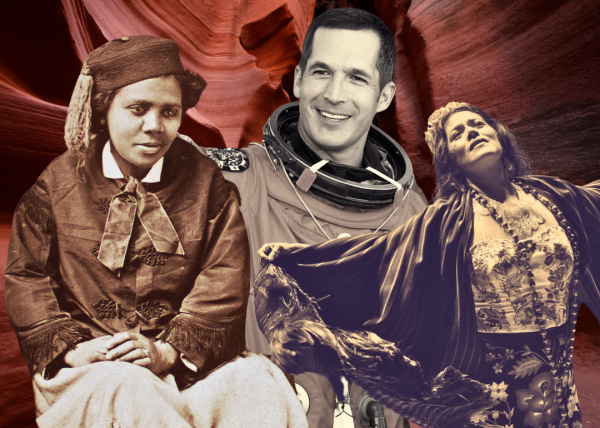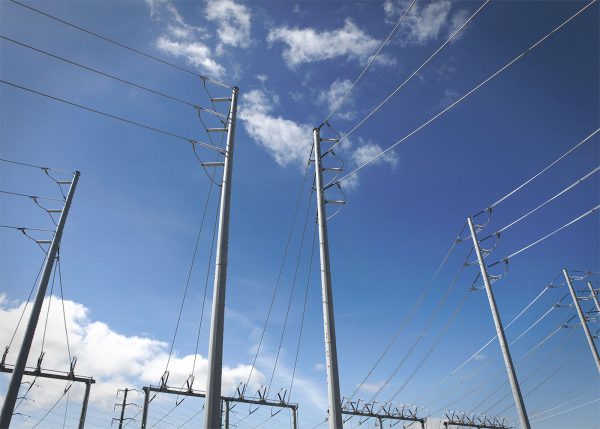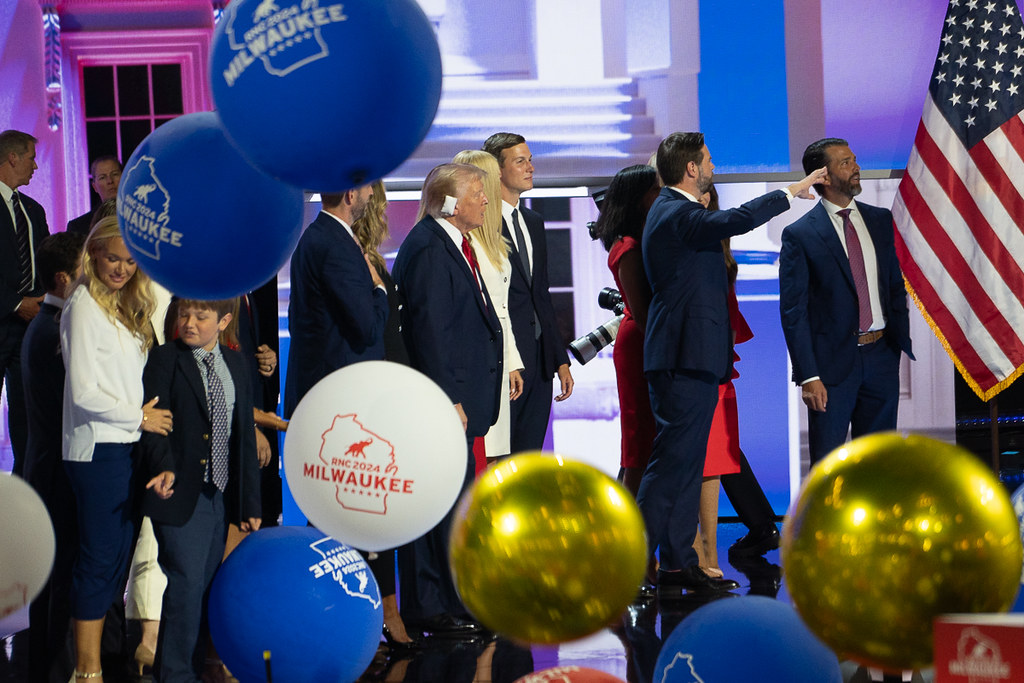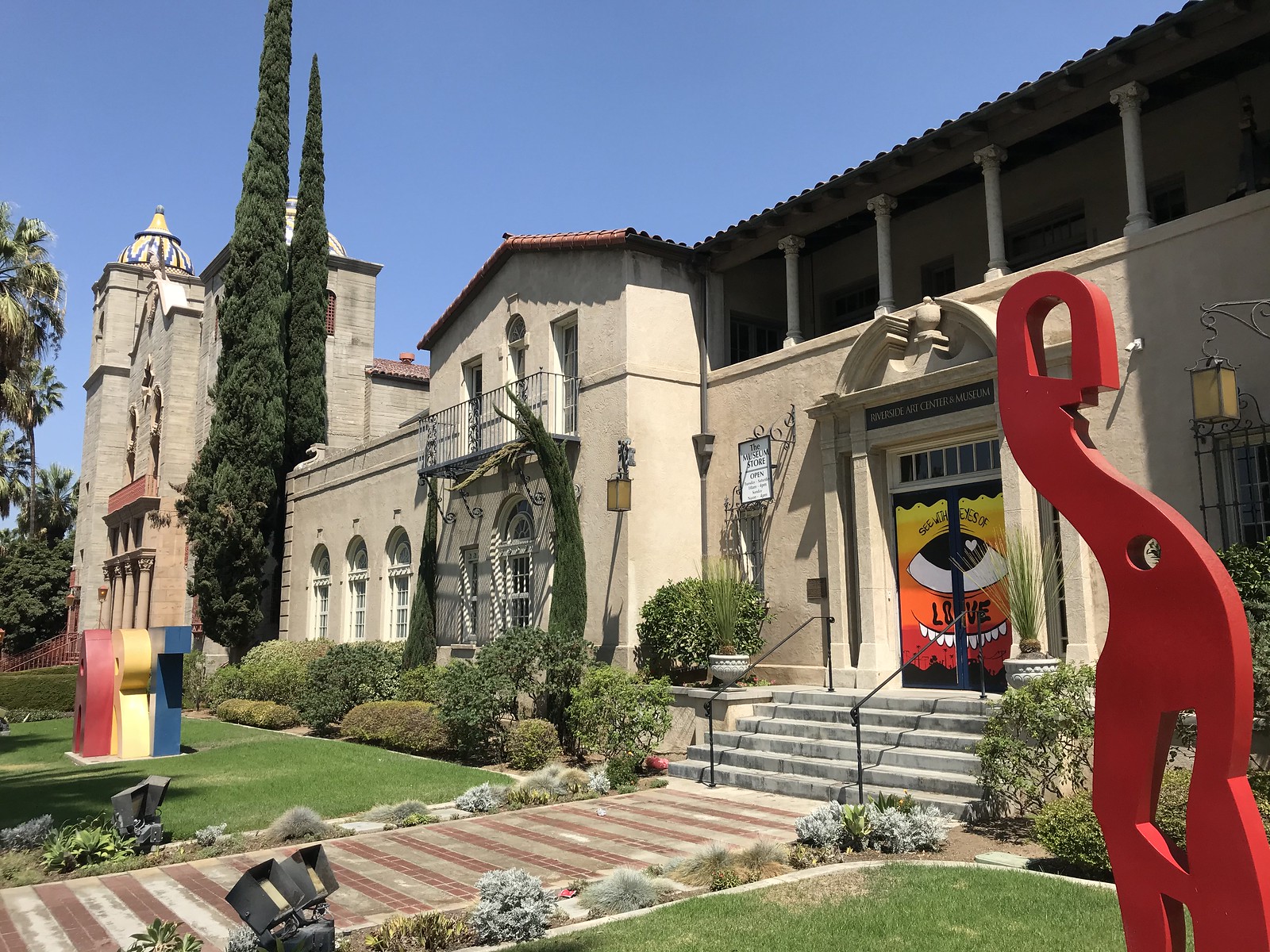Most Americans can count on one hand the Indigenous Americans who they know contributed to the colonial history of this land — perhaps Sacagawea, Geronimo, Pocahontas or Sitting Bull. However, the reality is the one-sided nature of American history taught to children in the U.S. has minimized the contributions of Indigenous people, making for a challenging journey to truth and reconciliation with the native people of this land.
With the discoveries of a burial site for Indigenous children in Albuquerque, New Mexico, in September 2021 and the unmarked graves of children in Canada in the summer of 2021, more of the world finally began reckoning with the brutal realities of the boarding school system and the insidious legacy of colonization — injustices that Indigenous activists and concerned communities have been speaking up about for years.
Speaking as an expert on a panel about Indigenous boarding schools, Dena Ned, a Chickasaw Nation of Oklahoma member, stressed the importance of remembering and learning our history. By doing so, Ned explained, we can understand why it’s essential for policies, systems and institutions to recognize and respond to community members.
As recognition of influential Indigenous Americans has grown, so have wrongful claims of Indigenous heritage, leading to the term “pretendian.” Notable figures like award-winning folk singer Buffy Sainte Marie, actor Sacheen Littlefeather and author Joseph Boyden have sparked public debate on what it means to be Indigenous.
The controversy lies in the damaging effects that claiming Indigenous ancestry can have on communities. When a non-Indigenous person misrepresents their heritage, they occupy spaces meant for Indigenous people, falsely represent a community they don’t belong to and prioritize their fabricated identity over those with genuine Indigenous heritage. While many people want to support and advocate for Indigenous communities, inaccurately claiming Indigenous heritage is not the same as being a trusted ally.
By learning about the backgrounds, contributions and sacrifices of Indigenous leaders, you can take action as an ally to break down the systems of oppression that threaten the rights and identities of Indigenous peoples.
Backed by news articles and historical sources, Stacker compiled a list of 19 influential Indigenous Americans you might not know about. Read on to find out about these Indigenous heroes and revolutionaries from across North America who resisted oppression, broke down barriers and changed the course of history.
Editor’s note: A previous version of this story included Sacheen Littlefeather on the list. The author has updated this article by providing more context on the matter of “pretendians.”
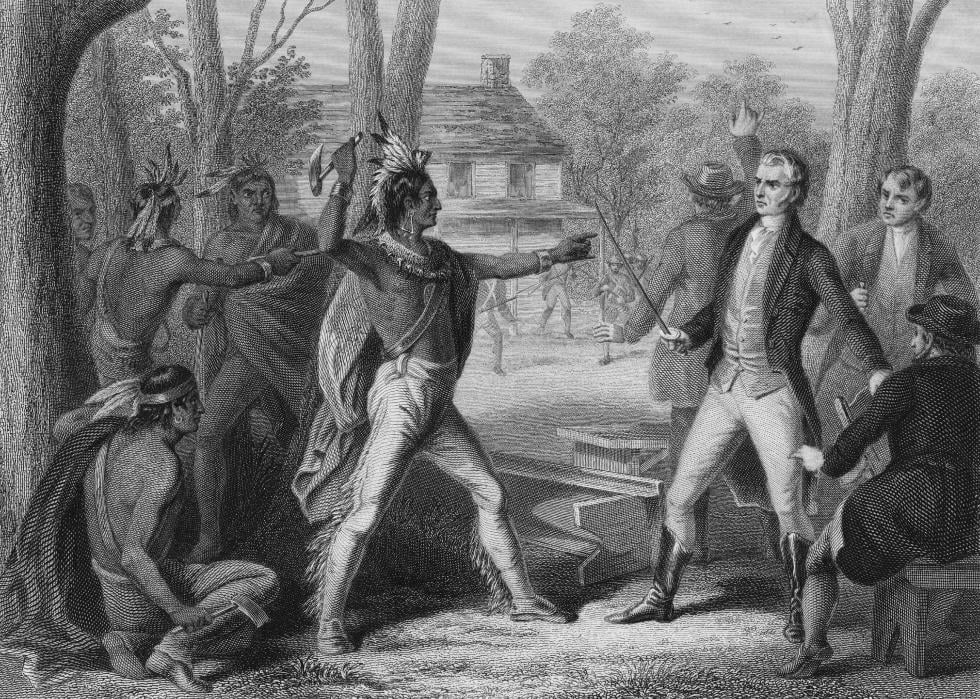
Tecumseh
Wedged between the American expansionists and the British invaders, Tecumseh was a Shawnee leader who attempted to carve out a sovereign Indigenous state in the Midwest. Tecumseh and his spiritually enlightened brother Tenskwatawa were descended from a long line of Indigenous leaders who fought for the land against the intruders.
Tecumseh strived for an alliance of all Indigenous people, including those in Canada and the Gulf of Mexico, hoping they would set aside any differences or ancestral rivalries to unite to defend their lives and homelands against white colonizers.
While Tecumseh’s mission failed and he died in battle in 1813, his efforts exposed the duplicitous underbelly of the foundation of America. His impact in the Midwest contributed to the American Indian Movement, which was started in Minneapolis in the 1960s and continues its work to this day.
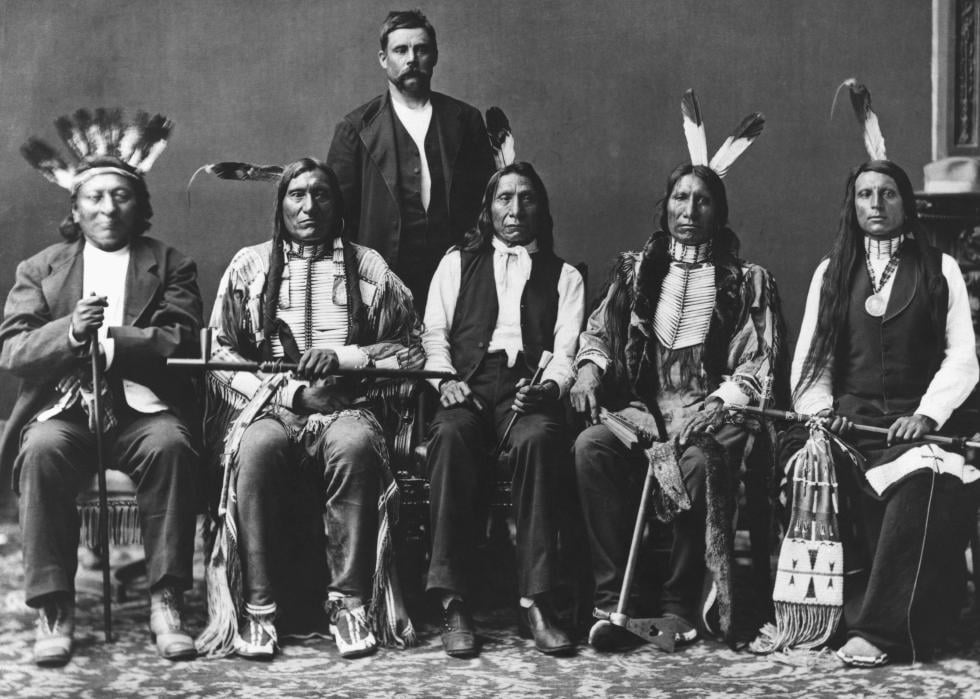
Red Cloud
Oglala Sioux Chief Red Cloud was among a group of Indigenous leaders who confronted the white settlers who had discovered gold in Montana during the 1860s. The settlers attempted to construct a road lined with protective forts to facilitate the mining of this gold.
However, following a two-year battle, Red Cloud and his army were able to halt the construction of this road, which caused the U.S. to abandon its forts. Red Cloud then signed a treaty securing land for his people in Wyoming, Montana and South Dakota.
A warrior turned diplomat, Red Cloud was committed to nonviolent advocacy. Later in life, after settling in the Pine Ridge Reservation in South Dakota, Red Cloud campaigned for Indigenous land and civil rights in Washington.
Red Cloud died on Pine Ridge Reservation in 1909 at 88 years old, outliving most major Lakota leaders during the Indian Wars.
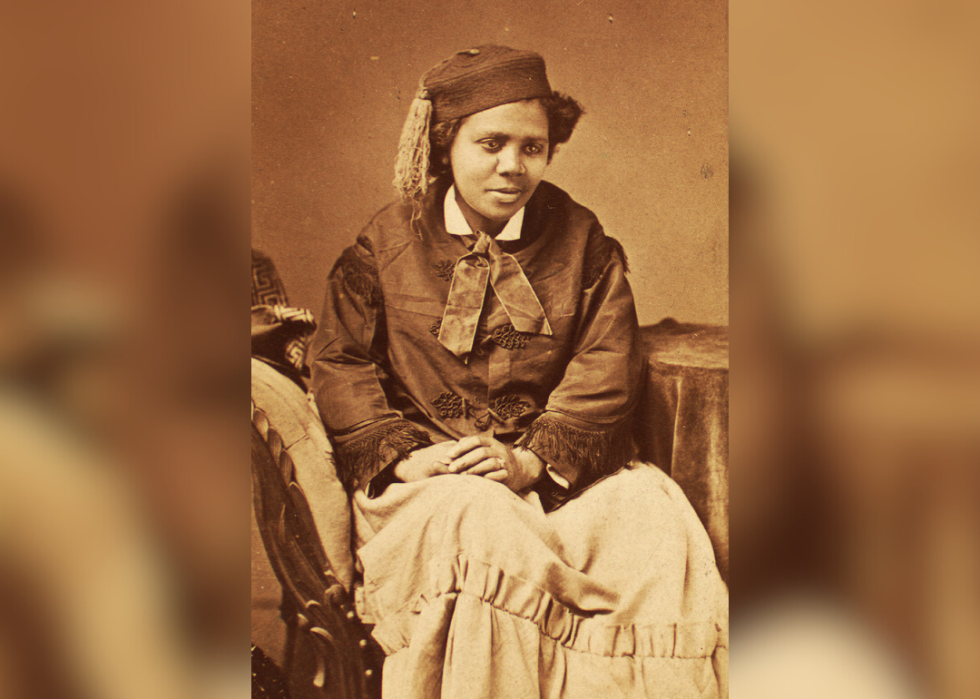
Edmonia Lewis
One of the first Black professional sculptors, Edmonia Lewis, broke down racial and gender barriers with her works of art. Born in 1844 to a Haitian father and Ojibwe mother, Lewis has a shared African and Indigenous American heritage. However, she lost both of her parents by the age of 7.
Her most famous work of art is the marble “The Death of Cleopatra,” which she carved in 1876 and was acquired by the Smithsonian in the 1990s. Lewis spent time sculpting in Europe, and many of her sculptures speak to the Black experience throughout history. She died in 1907. Her work is still in some of the most famous U.S. museums, including the Smithsonian, the Metropolitan Museum of Art and the Baltimore Museum of Art.
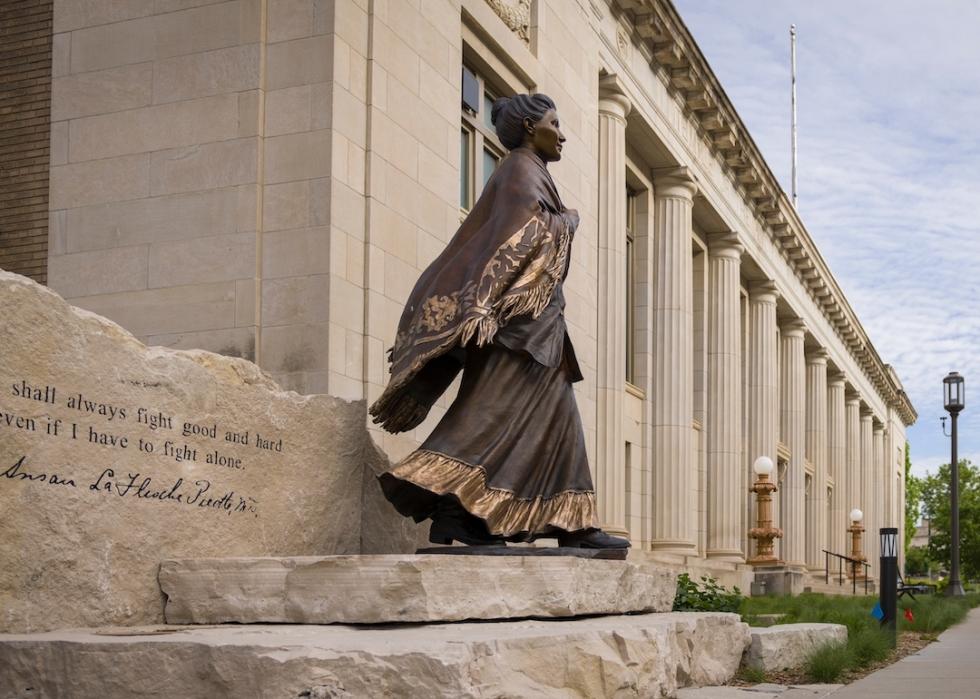
Susan La Flesche Picotte
Born on Nebraska’s Omaha reservation in 1865, Susan La Flesche Picotte was young when she first saw a sick Indigenous community member suffer and die while waiting for a white doctor. By pursuing a Euro-American education while honoring the customs of her people, La Flesche Picotte battled backlash and became the first Indigenous person to earn a medical degree.
She defied the odds again in 1913 when she opened the Omaha reservation’s first hospital. La Flesche Picotte died in 1915, and she was commemorated on her deathbed for bridging the gap between her Indigenous roots and her Euro-American medical education. The Picotte Memorial Hospital was designated a National Historic Landmark in 1993 and, as of 2024, is undergoing a major renovation.
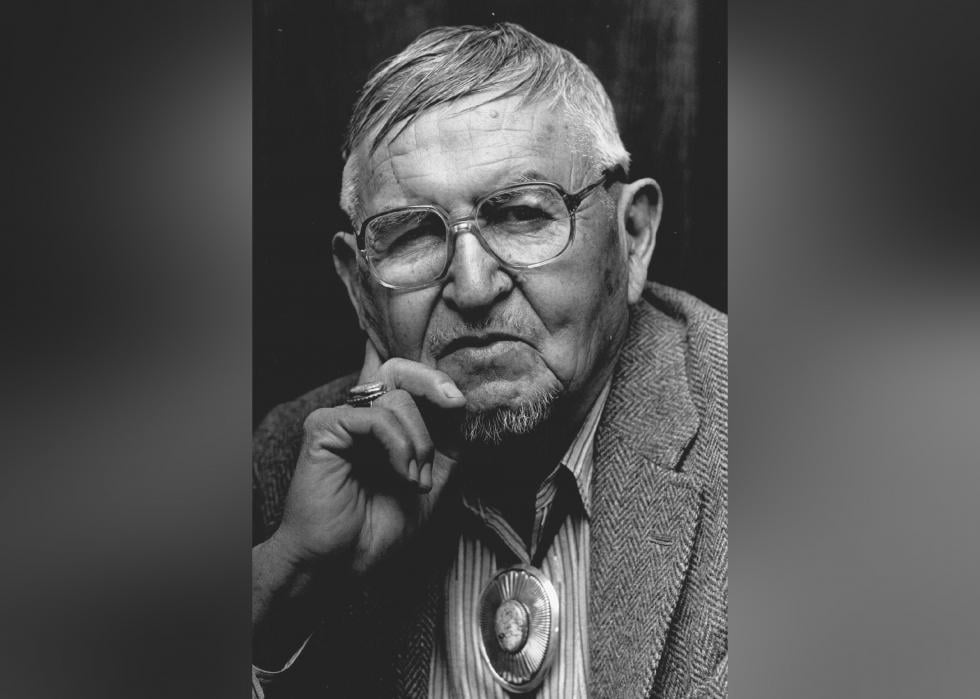
Allan Houser
Indigenous sculptor Allan Houser is considered to be among the most influential artists of the 20th century. His parents, members of the Chiricahua Apache Tribe, were held as war prisoners for 20 years, and his family tree includes legendary Apache leader Geronimo, who was a first cousin to Houser’s father.
Houser’s career began in 1939 when he was commissioned by the U.S. government to paint murals. He did so for the New York World’s Fair, the Department of the Interior in Washington D.C., and the Golden Gate International Exposition in San Francisco. Houser was one of the first Indigenous artists to receive the National Medal of Arts in 1992. His statue, “Swift Messenger,” sits in President Biden’s Oval Office.
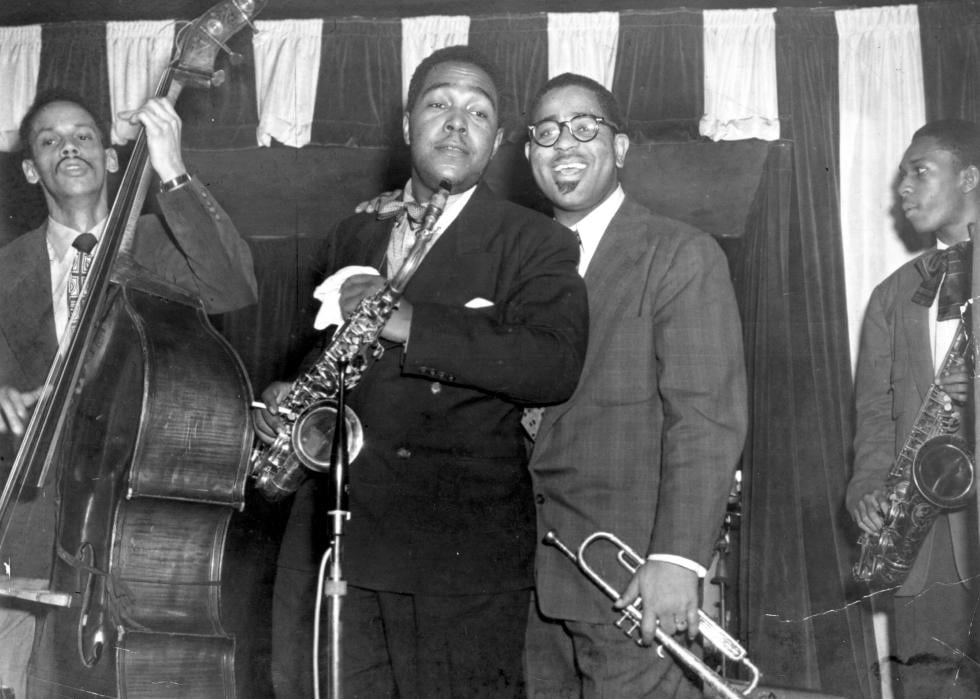
Charlie Parker
One of the most prolific jazz musicians of our time, Charlie “Yardbird” Parker was a renowned saxophonist whose bebop style left a lasting effect on American culture. Born to a Black father and an Indigenous mother, the Kansas City native would go on to collaborate with the likes of Miles Davis and Dizzy Gillespie.
Though he died in 1955 at the mere age of 34, Parker’s legacy continues to live on today. The Grammy Award winner’s influence on the jazz art form is undeniable. In 2021, the American Jazz Museum committed to celebrating Parker’s legacy by raising funds for youth activities and enhanced programming. Parker’s iconic works of art will be digitized and preserved by the museum for future generations.
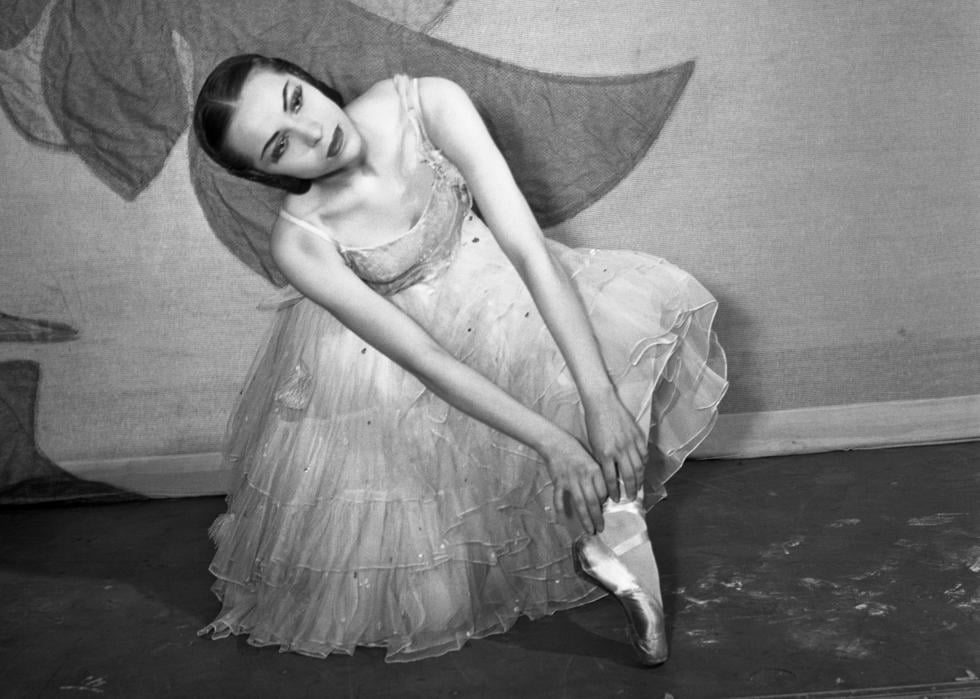
Maria Tallchief
Maria Tallchief moved to New York at just 17 to achieve her dream of becoming a dancer. However, many of the companies she approached turned her away because of her Osage Nation heritage. Her drive and determination against all odds, even refusing to change her last name, led her to become one of America’s most revered ballerinas.
Tallchief was the first American to perform at the Paris Opera Ballet, and she and her sister Marjorie went on to found the Chicago City Ballet. Maria Tallchief received the National Medal for the Arts in 1999, and five years after her death in 2013 she was posthumously inducted into the National Native American Hall of Fame in 2018.
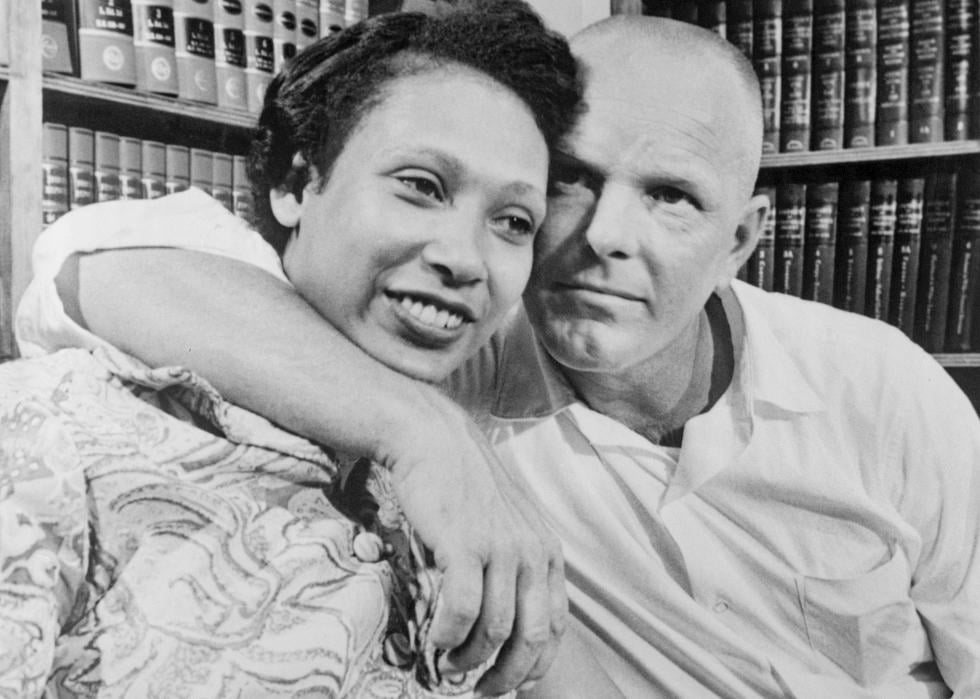
Mildred Loving
Many Americans will have heard of Mildred Loving, as she and her husband (and co-plaintiff) Richard battled the ban against interracial marriage in the super-charged case of Loving v. Virginia. What many Americans may not know is that Mildred Loving was of Black and Indigenous descent. She was part of the Rappahannock Tribe and her heritage continues to be a topic of controversy today.
The Lovings took their case to the Supreme Court in 1967 and won, legalizing interracial marriage across the nation. In order to exclusively focus on the white-Black binary that was dominating American discourse around race, coverage of the Loving v. Virginia case — as well as the 2016 film “Loving” — left out Mildred Loving’s multiracial heritage.
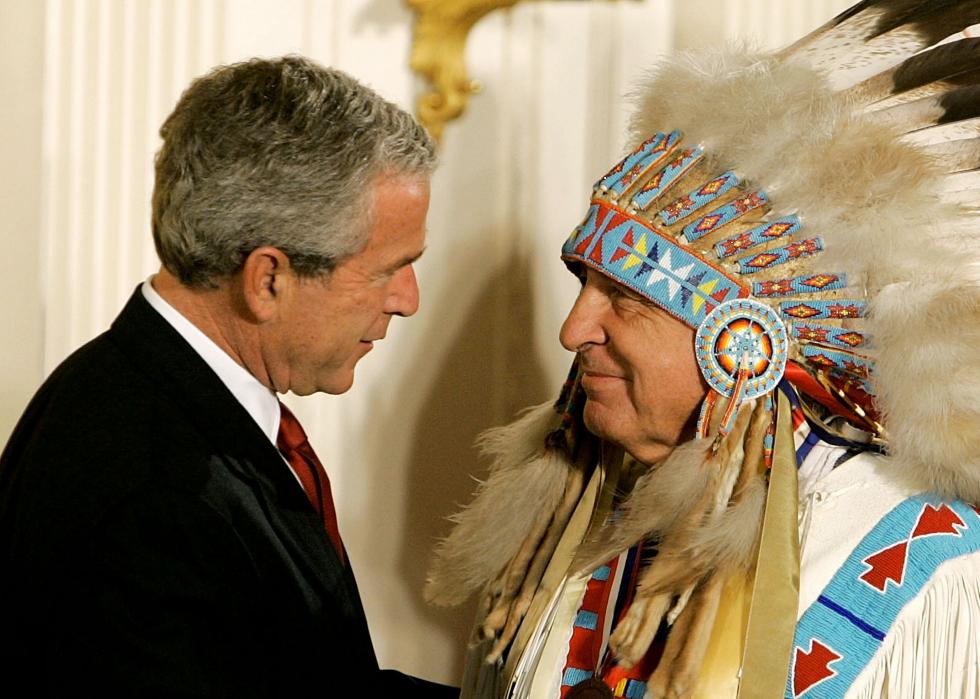
Ben Nighthorse Campbell
The National Native American Veterans Memorial opened its doors to the public on Veterans Day in 2020. This museum honors the contributions of the Indigenous community and would not have been erected without the support of former Colorado Sen. Ben Nighthorse Campbell.
When Campbell was elected in 1992, he was the first Indigenous American to serve in the Senate in over 60 years and the only Indigenous American in Congress.
Besides being a former congressman and a member of the Northern Cheyenne Tribe, Campbell is a Korean War vet, former Olympian, rancher and jewelry designer. As of 2024, his jewelry is for sale at Sorrel Sky Gallery in Santa Fe, New Mexico; Durango, Colorado; and New York City.
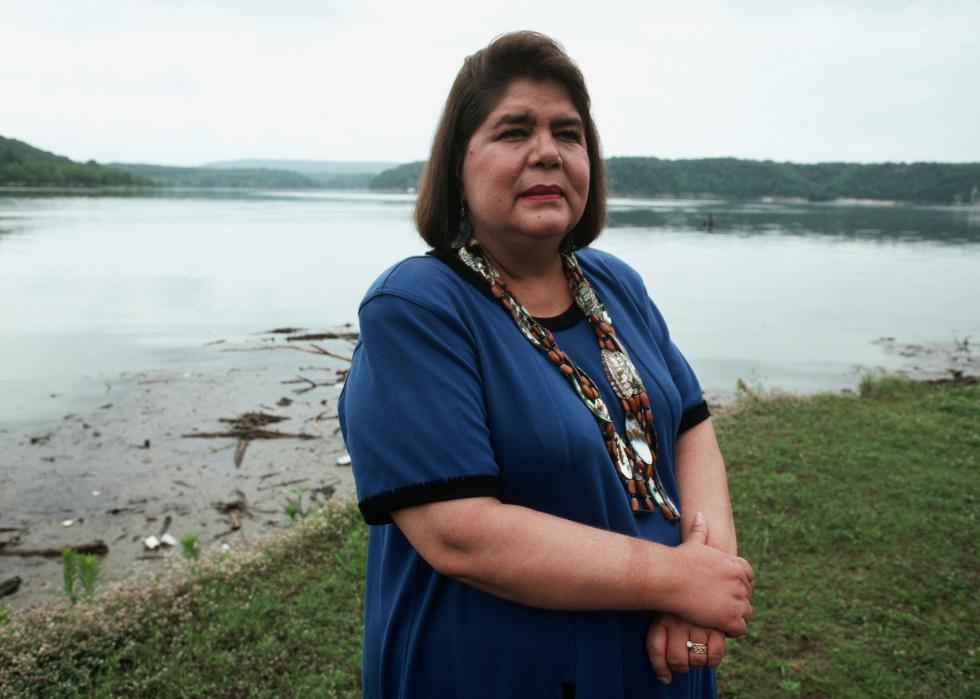
Wilma Mankiller
One of Time magazine’s 100 Women of the Year in 2020, Wilma Mankiller was the first woman appointed Principal Chief of Cherokee Nation. Mankiller faced discrimination and racism growing up, which fueled her commitment to feminism and self-governance for Indigenous people.
The Cherokee community thrived under her two terms as principal chief. Mankiller published her autobiography — “Mankiller: A Chief and Her People” — in 1993 and five years later, she received the Presidential Medal of Freedom from then-President Bill Clinton. She passed away in 2010, leaving a legacy of prosperity, pride and hope.
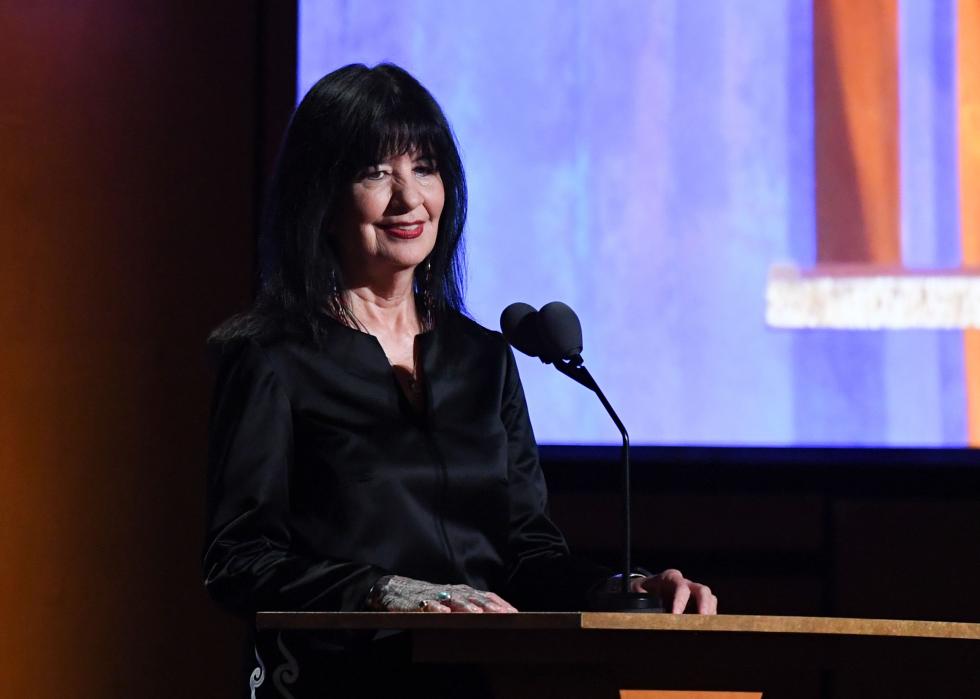
Joy Harjo
America’s first Indigenous poet laureate, Joy Harjo wants her writing to reflect the humanity of her people. Her work is guided by the need for justice and the desire for respect experienced by the Indigenous community. Harjo lives in Tulsa, Oklahoma, and is a Muscogee (Creek) Nation member whose grandfather endured the tragedies of the Trail of Tears.
Harjo was an artist and an activist growing up. Today, she elevates her people and honors the spirits of her ancestors with every word. Her most recent work—a picture book with fellow Indigenous creator Michaela Goade called “Remember”—was released in 2023, the same year she won Yale University’s esteemed Bollingen Prize for American Poetry.
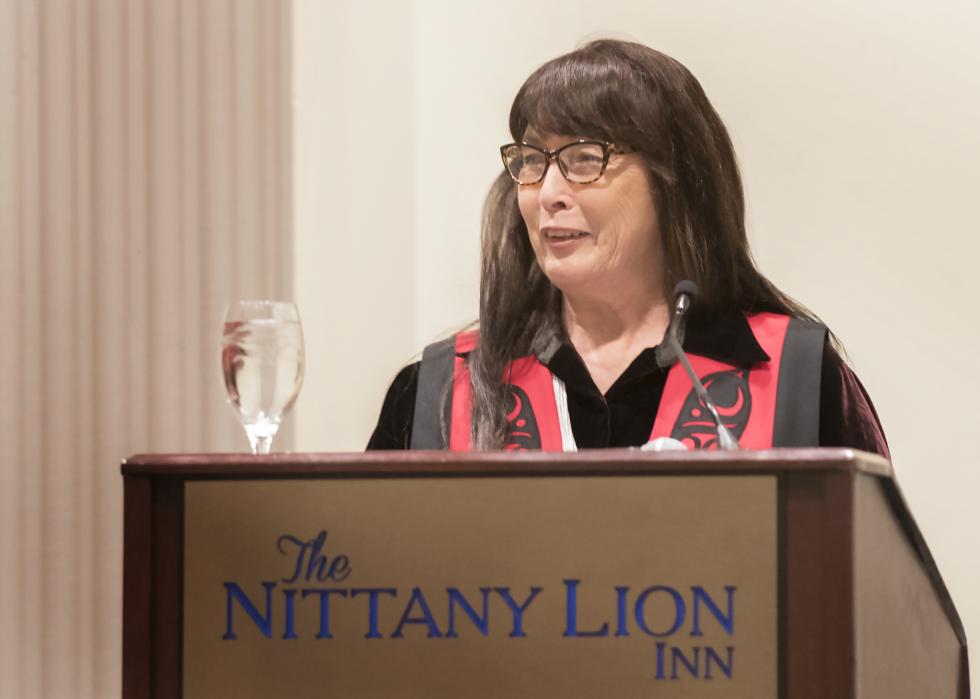
Charlene Teters
For many years, artist, educator and activist Charlene Teters has been committed to removing Indigenous cultural appropriation in the state of Illinois. A member of the Spokane Tribe and former Academic Dean of the Institute of American Indian Arts, Teters is a powerful and creative voice in the movement for change.
Decades after she protested the University of Illinois at Urbana–Champaign’s mascot, Chief Illiniwek, the school finally removed the mascot. The fight against culturally appropriated mascots, however, is not over yet. Teters is a founding board member of the National Coalition on Racism in Sports and the Media, which was influential in the 2020 change of Washington state’s NFL team from the Redskins to the Commanders.
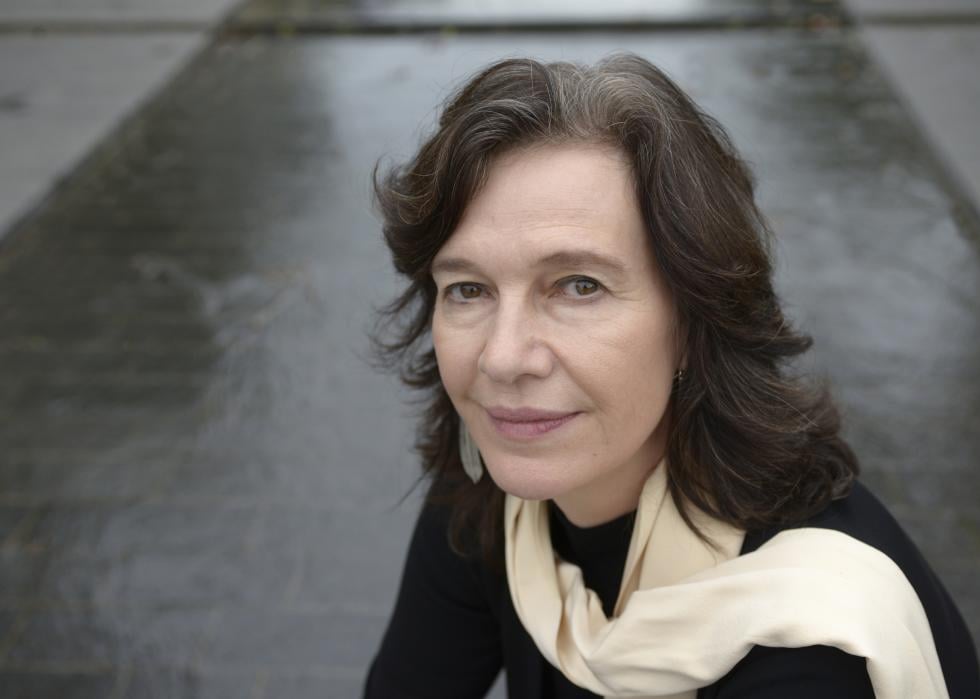
Louise Erdrich
The Pulitzer Prize-winning author of “The Night Watchman,” Louise Erdrich has written children’s books, novels, poetry and a memoir. A member of the Turtle Mountain Band of Chippewa Indians, Erdrich lives in Minnesota where she owns an independent bookstore, Birchbark Books & Native Arts, which focuses on literature from and about Indigenous people, particularly those in the Twin Cities.
The award-winning author elevates the history and culture of her people, especially the Indigenous community in North Dakota, and is deeply connected to their fight for survival. Erdrich’s 2021 novel, “The Sentence,” centers on a woman who returns from prison to work in an Indigenous bookstore and is haunted by a late customer.
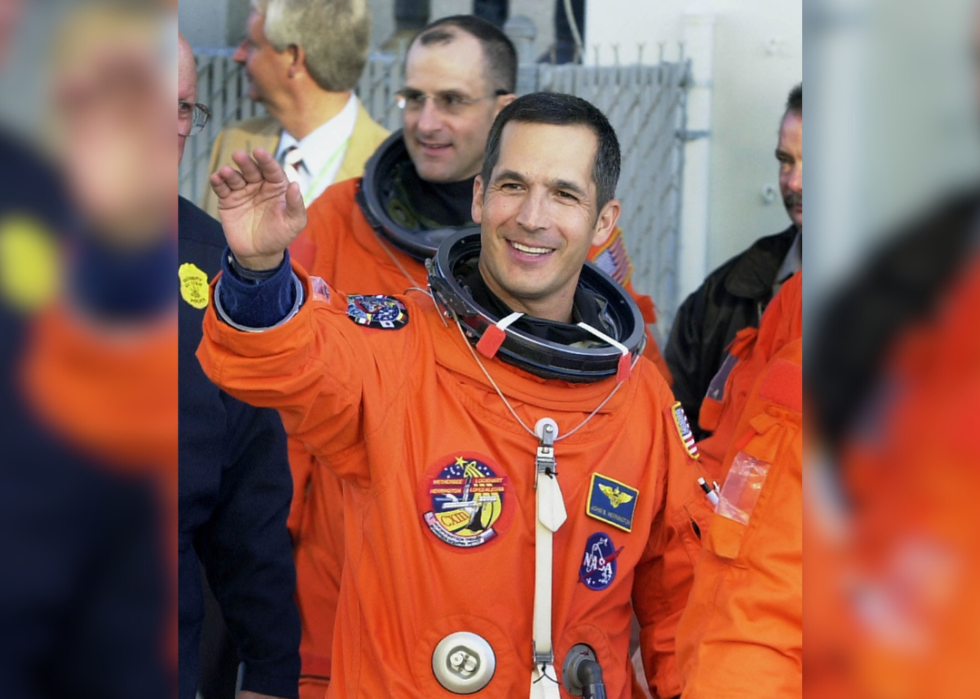
John Herrington
When the STS-113 Endeavour launched from Kennedy Space Center in November 2002, it carried the first Indigenous American into space. John Herrington carried the Chickasaw Nation flag, a traditional flute and a few other personal items with him.
His journey has seen him as a naval officer, a NASA astronaut and on the big screen in the IMAX movie “Into America’s Wild.” With a passion for Indigenous oral storytelling and a love for science, Herrington travels the world to tell his stories from the stars. He wants to encourage more Indigenous youth to get into the STEM fields and reclaim their ancestral legacy of engineering, astronomy and science.
“A lot of people have a stereotypical view of what a Native American is, but in reality, we’re engineers, we’re scientists, we’re doctors, we’re lawyers,” he told PBS News Hour in 2023. “We appreciate and we value our heritage.”
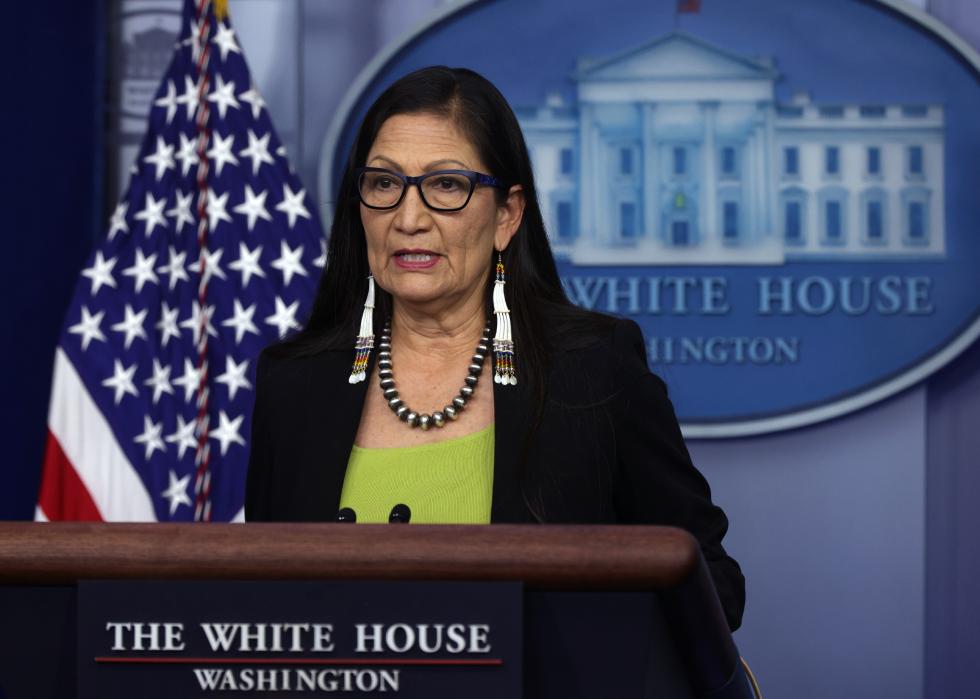
Deb Haaland
Deb Haaland made history in March 2021 when she was confirmed as U.S. Cabinet secretary. The first cabinet secretary of Indigenous American heritage, Haaland is at the forefront of conservation efforts and the fight against climate change, telling NPR that she believes tribal consultation is necessary when addressing environmental issues. Regarded as a “barrier-breaking public servant” by the Biden administration, Haaland is positioned to play a pivotal role in the movement toward a greener future.
In December 2023, she announced that the National Park Service is collaborating with tribes across the U.S. on a theme study on the Indian Reorganization Period, an important chapter in the country’s history.
You may also like: How a non-institutional response to mental health crises is possible — even in big cities
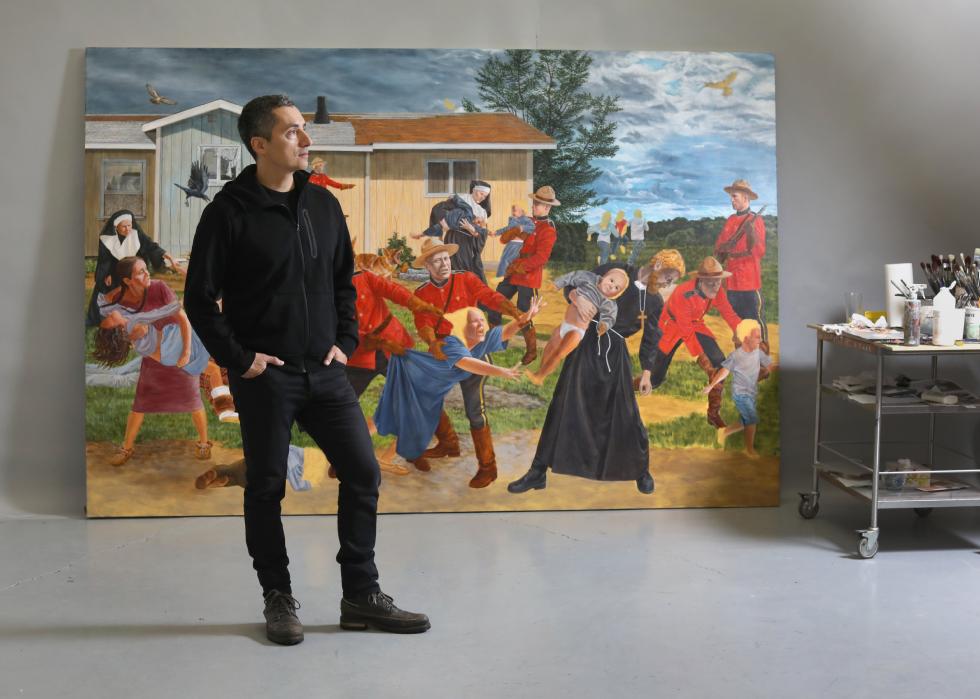
Kent Monkman
Kent Monkman, a creative visionary whose work has been commissioned by the Metropolitan Museum of Art, is a Swampy Cree artist born in Canada. His work centers on the effects of Christianity on Indigenous communities.
With solo exhibits across Canada and group exhibits throughout North America, Monkman’s impactful art challenges conventional depictions of his people by white artists like Paul Kane. In 2023, he was named an Officer of the Order of Canada, the country’s highest civilian honor.
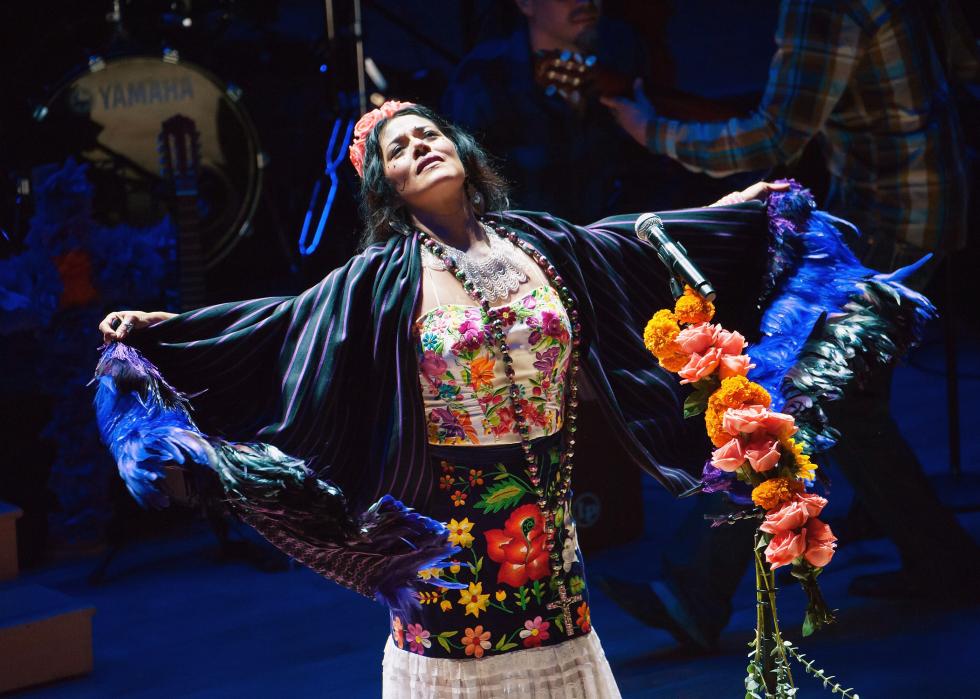
Lila Downs
Lila Downs has always felt pulled between her cultures. The artist grew up in two worlds, Minnesota and Oaxaca, Mexico, and is also Indigenous Mixtec, making her a tricultural creative. Her multifaceted heritage shines through in her entertaining and inspiring music, and she uses her songs to tell stories of her people. Inspired by these stories, her song “Dark Eyes” is about the labor Indigenous communities often take on, which is often deemed “essential” yet overlooked.
She has been nominated for four Grammy Awards throughout her career, winning one in 2013 for “Pecados y Milagros”; her most recent nomination came in 2024 for her album “La Sánchez,” released in 2023.
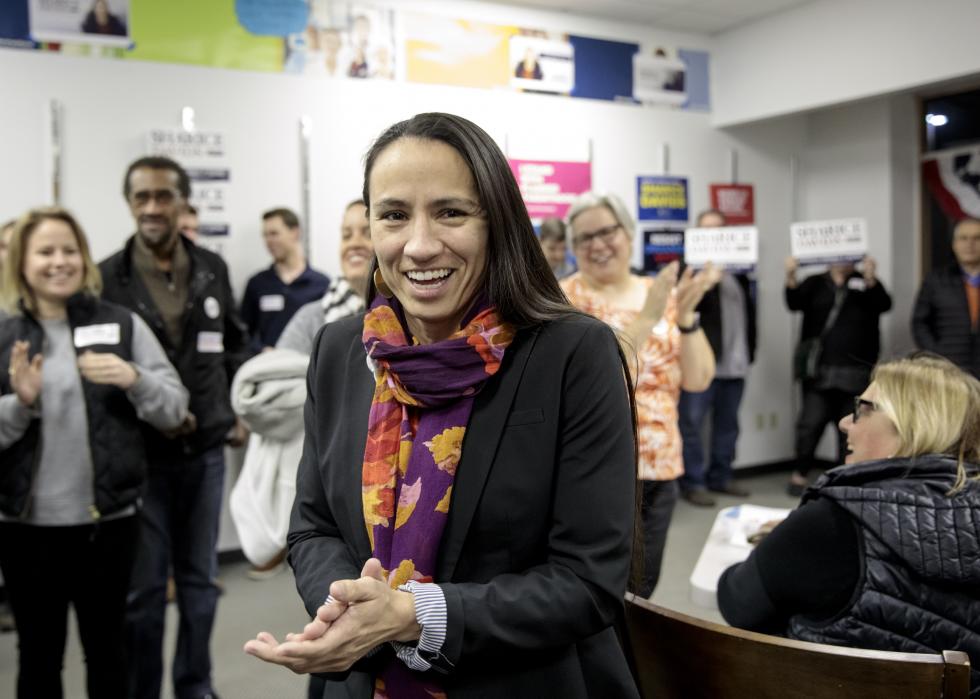
Sharice Davids
A member of the Ho-Chunk Nation of Wisconsin, Rep. Sharice Davids was a professional athlete, business owner, lawyer and nonprofit executive before she was elected to Congress in January 2019. She also became the first openly LGBTQ+ Native American elected to Congress.
As one of the two Indigenous American women serving in Congress, Davids is dedicated to reducing poverty, creating safe working conditions and closing the pay gap for Indigenous women.
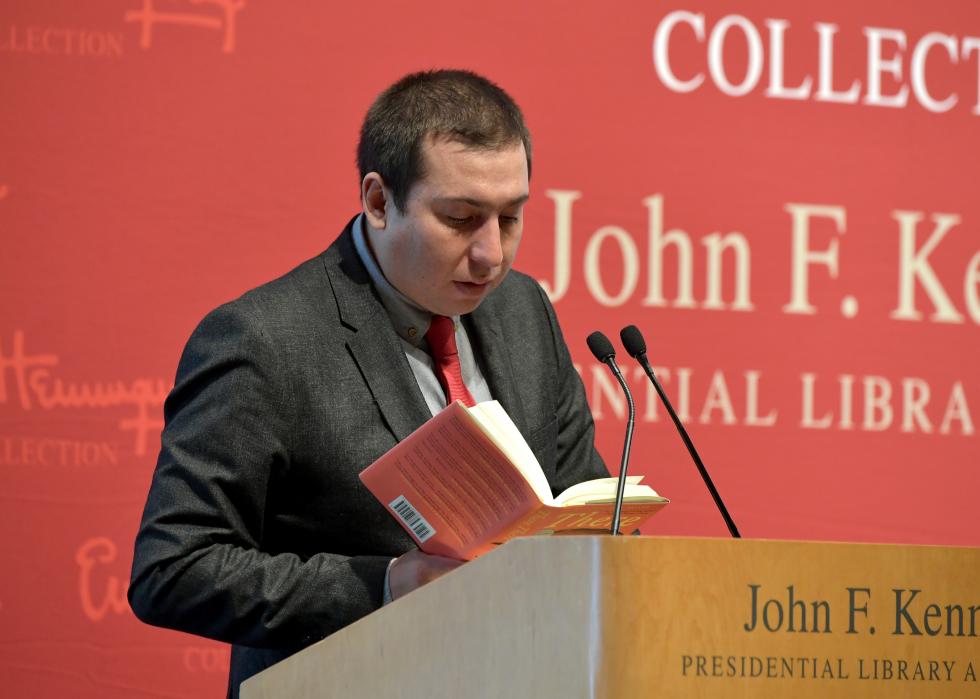
Tommy Orange
Author Tommy Orange is a member of the Cheyenne and Arapaho tribes, but he wasn’t surrounded by the Indigenous community in his hometown of Oakland, California. His debut novel, “There There,” won an award at the 2018 National Book Circle Awards.
In sharing the Indigenous perspective in a contemporary way, Orange speaks about the relocation of his people to the cities and how assimilative culture has left many Indigenous communities feeling “voiceless” and underrepresented. His 2024 follow-up to “There There,” “Wandering Stars,” centers on the descendants of a Cheyenne survivor of the 1864 Sand Creek massacre, and it’s also earned rave reviews.
Written by Zeynep Guler Tuck. Additional research by Emilia Ruzicka. Story editing by Aly Marti. Copy editing by Nicole Caldwell and Kristen Wegrzyn. Photo selection by Clarese Moller.
The article was copy edited from its original version.
Re-published with CC BY-NC 4.0 License.

